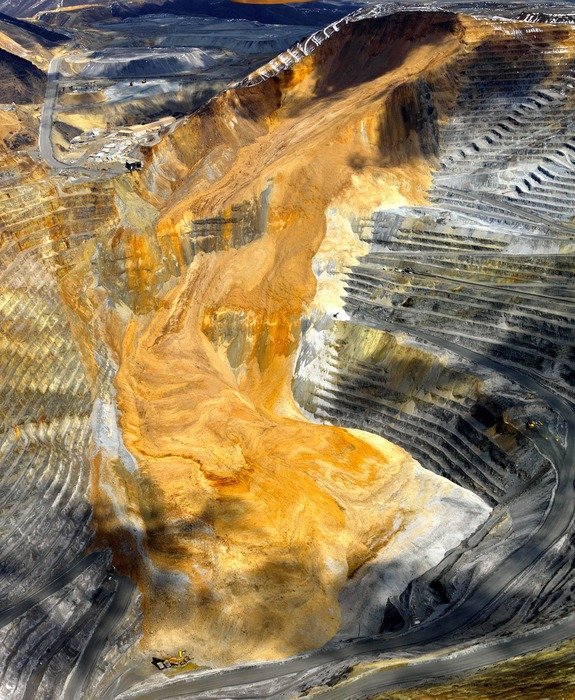Landslide at Utah copper mine. Credit: University of Utah
SALT LAKE CITY, Jan. 6 (UPI) -- Two landslides at a Utah copper mine that triggered earthquakes were likely the biggest non-volcanic slides in North America's modern history, researchers say.
In the April event, two rock avalanches 90 minutes apart at the open-pit Bingham Canyon Mine, 20 miles southwest of Salt Lake City, triggered 16 small earthquakes, geologists at the University of Utah reported in the Geological Society of America's journal GSA Today.
The two slides moved at an average of almost 70 mph and reached estimated speeds of at least 100 mph, leaving a deposit so large it "would cover New York's Central Park with about 20 meters (66 feet) of debris," the researchers wrote.
While earthquakes regularly trigger landslides, the gigantic mine pit landslides were the first known to have triggered quakes, they said.
The slides themselves were measured by seismic scales as having magnitudes 5.1 and 4.9, respectively.
No one was hurt or died in the Bingham Canyon slides because the mining company monitoring movements in the 107-year-old mine -- which produces 25 percent of the copper used in the United States -- recognized signs of increasing instability in the months preceding the slides.
"This is really a geotechnical monitoring success story," Kris Pankow, associate director of the University of Utah Seismograph Stations, said. "No one was killed, and yet now we have this rich dataset to learn more about landslides."
The Bingham Canyon event was among the best-recorded in history, making it a treasure trove of data for studying slides, the researchers said.















